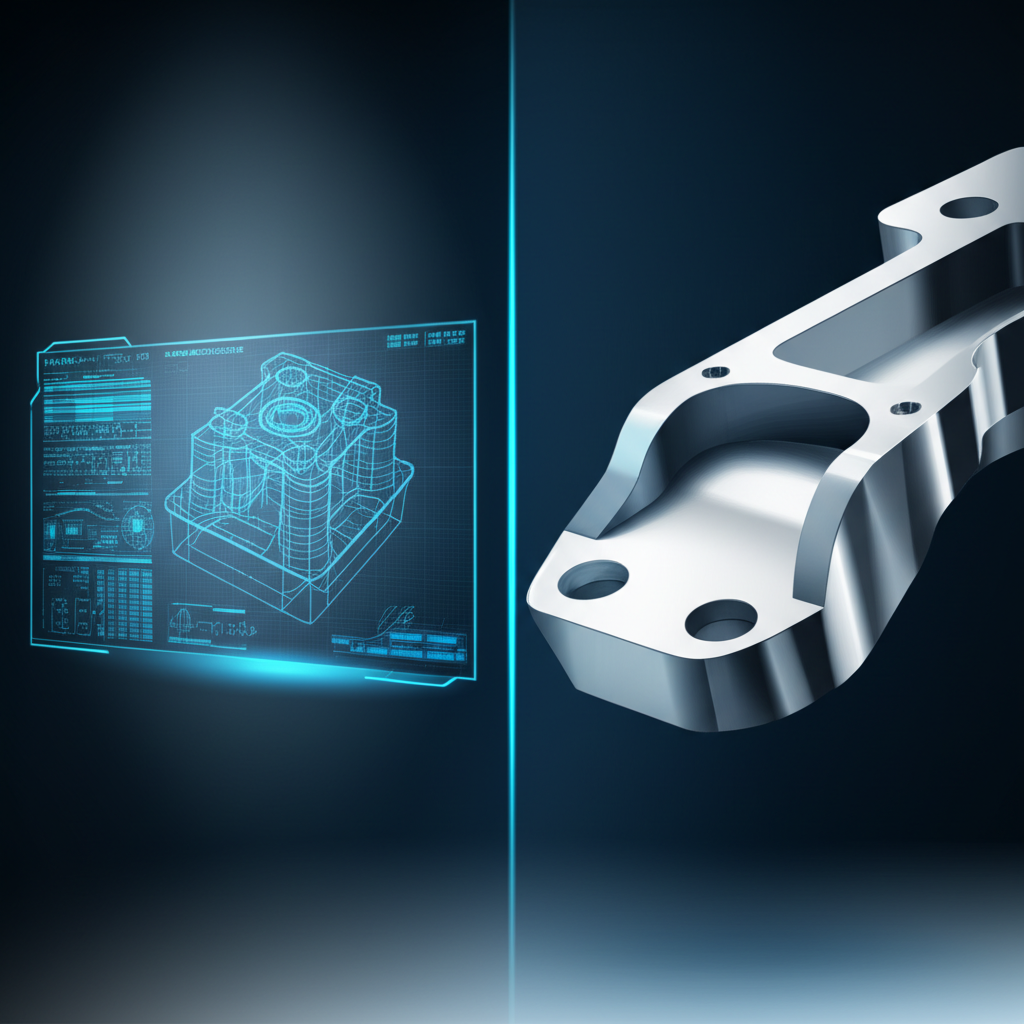How to Vet Online CNC Services for Flawless Parts

TL;DR
Vetting online CNC machining services requires a structured evaluation of key performance indicators. The process begins with clearly defining your project requirements, including material, tolerances, and quantity. From there, assess potential services on their quoting speed, range of material and finishing options, demonstrated quality control systems like ISO 9001 certification, and the availability of technical support. A thorough review ensures you partner with a service that can deliver parts to your exact specifications, on time and on budget.
Defining Your Project Requirements Before You Search
Before you can effectively evaluate any online CNC machining service, you must first establish a clear and detailed definition of your project's needs. This foundational step is crucial; without precise specifications, it's impossible to get accurate quotes or compare providers on an equal footing. A well-defined project scope acts as your roadmap, guiding your search and ensuring that potential partners are assessed against the right criteria. This preparation saves significant time and prevents costly miscommunications down the line.
Taking the time to document your requirements transforms the quoting process from a rough estimate into a precise cost analysis. It empowers you to communicate with technical clarity, whether you're a seasoned engineer or a product developer. This initial investment in planning ensures that the services you vet are genuinely capable of meeting your project's technical and logistical demands from the very beginning.
Use the following checklist to solidify your project specifications:
- CAD Model Readiness: Ensure your 3D CAD files (typically in STEP, IGES, or STL format) are finalized, error-free, and ready for upload. Many platforms, like those offered by Protolabs, use these files for instant quoting and manufacturability analysis.
- Material Selection: Specify the exact material required. Common options include metals like Aluminum 6061 or Stainless Steel 304, and plastics such as ABS, PEEK, or Delrin. If you need a specialty alloy, confirm the service can source it.
- Required Tolerances: Clearly state the dimensional tolerances your part requires. While many services offer standard tolerances (e.g., ±0.005 inches or ±0.13 mm), tighter tolerances often require specific requests and may impact cost.
- Part Quantity: Define the number of parts needed, whether it's a single prototype or a low-volume production run of thousands. This significantly influences pricing and provider selection.
- Surface Finish: Determine the necessary surface finish. Options can range from a standard 'as-machined' finish to more specialized treatments like bead blasting, anodizing, or powder coating to meet aesthetic or functional requirements.

Key Criteria for Evaluating Online CNC Machining Services
Once your project requirements are defined, the next step is to systematically evaluate potential online CNC machining services. A methodical approach focused on a few key criteria will help you distinguish a high-quality partner from the rest. These factors go beyond the final part and speak to the provider's reliability, capabilities, and overall value. Focusing on these areas will ensure a smoother process and a better final product.
Quoting Process and DFM Feedback
The efficiency of the quoting process is a primary indicator of a service's technological sophistication. Leading platforms provide instant quoting engines that analyze your CAD file and deliver a price in seconds. This speed accelerates your development cycle. Equally important is Design for Manufacturability (DFM) feedback. An automated DFM analysis, as highlighted by Norck, can flag potential issues like thin walls or overly complex geometries before production, saving you from costly redesigns. A service that provides this feedback upfront demonstrates a commitment to a successful outcome.
Material Options and Finishing Capabilities
A top-tier service should offer a wide array of materials, from common metals and plastics to specialty alloys. A comprehensive material library, like those detailed by providers such as Hubs, allows you to select the optimal material for your part's specific application without compromise. Furthermore, the availability of various post-processing and surface finishing options—such as anodizing, powder coating, and bead blasting—is critical for parts that have specific aesthetic or functional surface requirements. The ability to complete these steps in-house or through their network simplifies your supply chain.
Turnaround Time and Reliability
In product development, speed is often critical. Evaluate the service's stated turnaround times, which can range from as fast as one day to several weeks depending on complexity and capacity. Look for providers that offer transparent lead times and reliable shipping options. A global network of manufacturing partners can also help reduce shipping times and costs. However, speed should not come at the expense of reliability. Check for a proven track record of on-time delivery.
Quality Control and Certifications
Precision is the hallmark of CNC machining. A reputable service must have a robust quality assurance process. Look for certifications like ISO 9001, which indicates a commitment to a standardized quality management system. For specific industries, certifications such as AS9100 (aerospace) or ISO 13485 (medical) are non-negotiable. For instance, providers like XTJ CNC Machining Services highlight their ISO 9001 certification and advanced 5-axis capabilities, which are crucial indicators of quality for demanding projects. The ability to provide first article inspections (FAI) and final inspection reports further demonstrates a commitment to quality and ensures your parts meet exact specifications.
Customer Support and Technical Expertise
Even with highly automated platforms, access to human expertise is invaluable. Assess the quality of a service's customer support. Can you easily reach an engineer or technical expert to discuss your project's specific needs or troubleshoot a complex design? Responsive and knowledgeable support can be the difference between a failed part and a successful project. A service that invests in expert support shows they are a partner, not just a vendor.
Analyzing Quotes and Understanding True Costs
Once you begin receiving quotes, it's essential to look beyond the headline price-per-part. A comprehensive cost analysis is necessary to make a true 'apples-to-apples' comparison between different online CNC machining services. The structure of quotes can vary, and understanding the components is key to avoiding unexpected expenses and accurately budgeting for your project.
A typical quote is influenced by several factors, including machining time, material cost, and the complexity of your part's geometry. More advanced machinery can also affect the price. For example, parts requiring 5-axis CNC mills, used for complex geometries, generally have a higher hourly rate ($100–$200) compared to simpler 3-axis mills ($40–$80). This is a critical consideration when evaluating the cost-effectiveness of a design.
When comparing quotes, be vigilant for costs that may not be immediately obvious. A lower initial price might be offset by other fees. To ensure a fair comparison, scrutinize each quote for these potential additional costs:
- Setup Fees: Some services charge a one-time fee for setting up the machine for your specific job, especially for small runs.
- Tooling Costs: If your part requires custom tooling, this may be itemized separately.
- Minimum Order Quantities (MOQs): A low per-part price may only apply above a certain quantity. Ensure the quote reflects your actual order volume.
- Shipping and Handling: Confirm whether shipping costs are included or will be added later. International shipping can add significant expense and time.
- Finishing and Post-Processing: Anodizing, painting, or other treatments are almost always quoted as separate line items.
Final Vetting Steps: From Reviews to a Pilot Order
After narrowing down your options based on technical capabilities and cost analysis, it's time to perform final due diligence. These last steps are crucial for building confidence in your chosen partner before committing to a larger or more critical production run. This validation phase moves from on-paper specifications to real-world performance, ensuring the service can deliver on its promises.
This final verification is about mitigating risk. A service might look perfect in its marketing materials, but its actual performance in communication, quality, and reliability can only be truly assessed through direct interaction and a small-scale test. Taking these precautionary steps helps solidify a long-term, trustworthy manufacturing partnership.
Follow this three-step process to make your final decision with confidence:
- Conduct Social Proof Research: Move beyond the provider's website and look for independent reviews, testimonials, and case studies. Platforms like Reddit, industry forums, and B2B review sites can offer candid feedback from other engineers and product developers. This social proof provides insight into the company's reputation for quality, reliability, and customer service.
- Assess Communication and Support: Use this opportunity to test their customer support. Ask a few specific, technical questions about your project via email or phone. The speed, clarity, and expertise of their response are strong indicators of the level of support you can expect once you become a customer. A responsive and helpful team is a valuable asset, especially when dealing with complex projects or tight deadlines.
- Place a Small Prototype Order: The most definitive way to vet a service is to use it. Before committing to a large production run, place a small, low-risk pilot order for one or a few prototypes. This allows you to evaluate the entire process firsthand—from ordering and communication to shipping and, most importantly, the quality of the final part. Holding the physical part in your hands is the ultimate test of their capabilities and adherence to your specifications.

Frequently Asked Questions
1. How much do CNC services cost?
The cost of CNC services varies significantly based on several factors. The type of machine used is a primary driver; for example, a 5-axis CNC mill for complex parts can have an hourly rate of $100-$200, whereas a more standard 3-axis mill might be in the $40-$80 range. Other key factors include material cost, part complexity, quantity ordered, and any required post-processing or finishing.
2. What is the hourly rate for a CNC machine?
While an average hourly rate for CNC machining is often cited around $60/hour, this is a general estimate. The actual rate depends heavily on the machine's complexity (3-axis, 5-axis, lathe with live tooling), the geographic location of the shop, and the shop's overhead. The total cost of a part is calculated from raw material costs plus the labor hours required to machine it, which is determined by the hourly rate.





